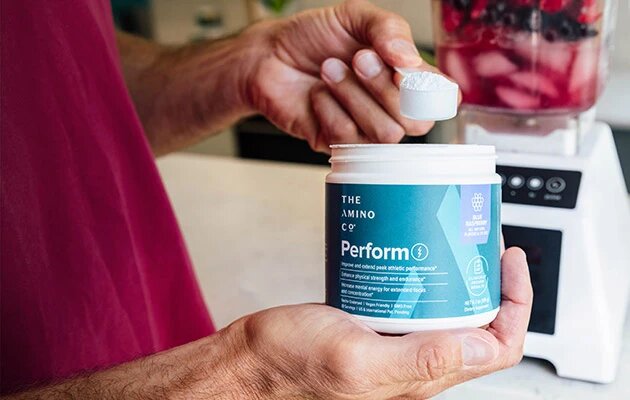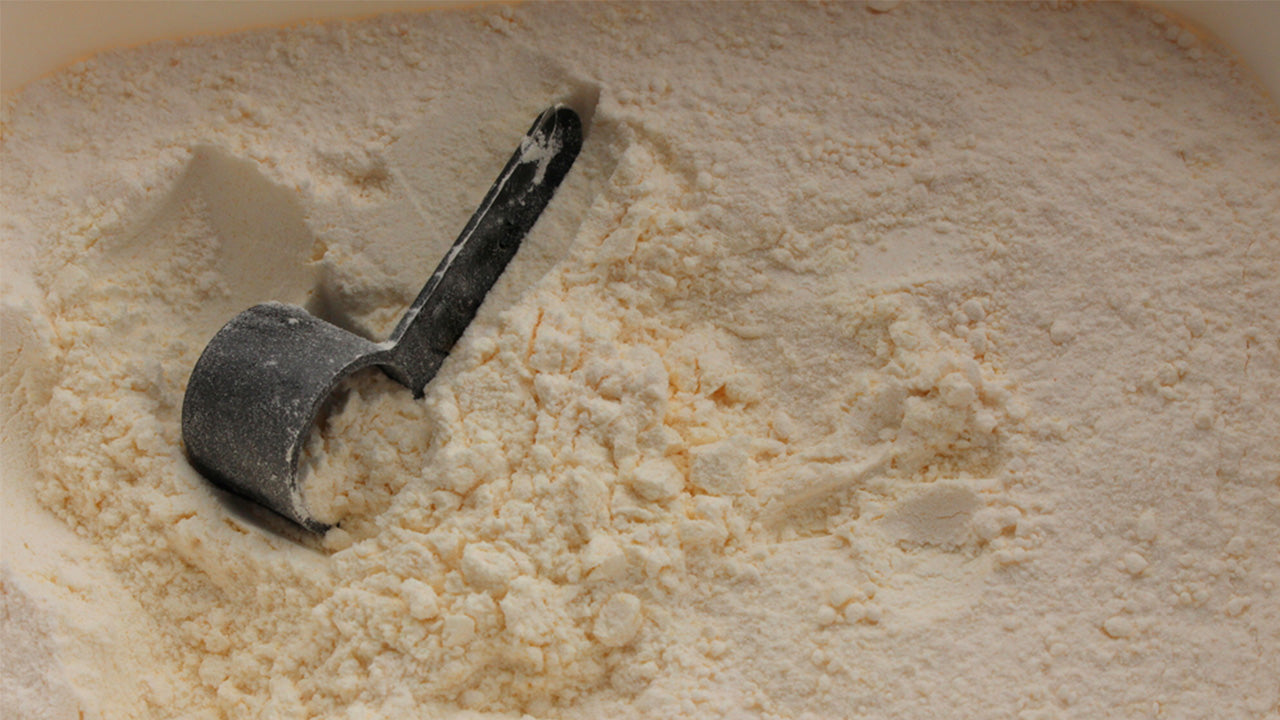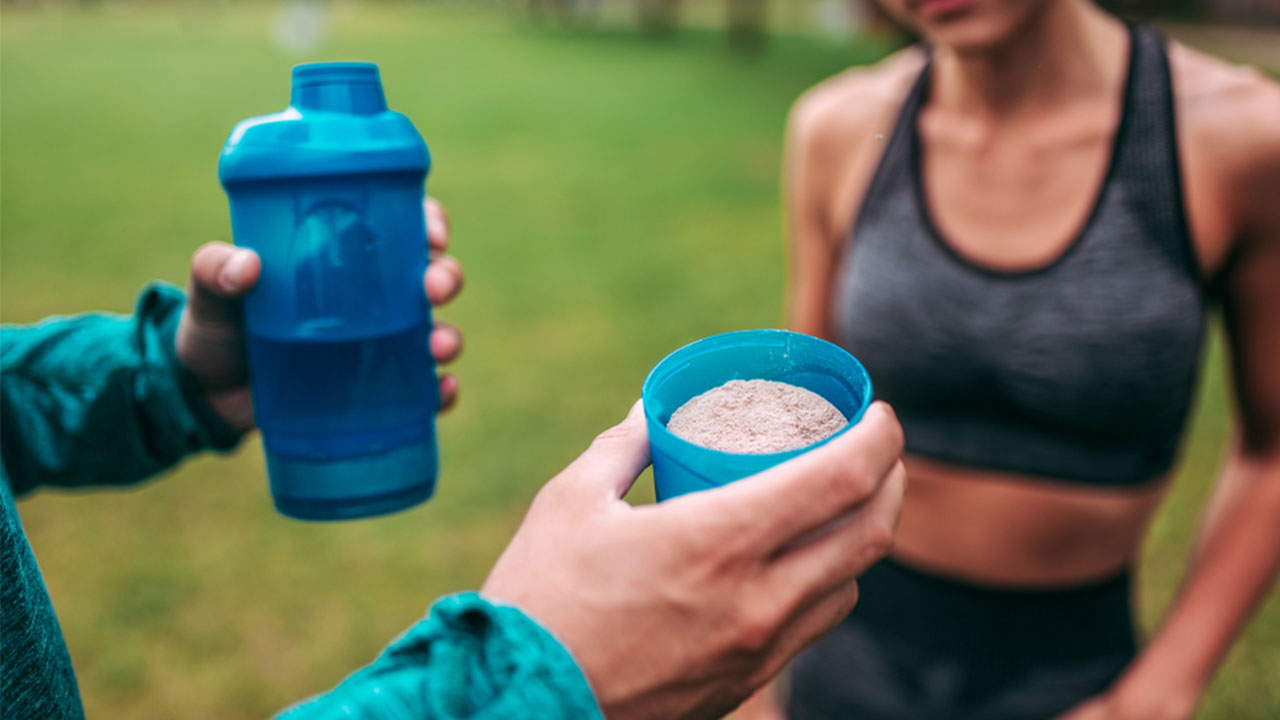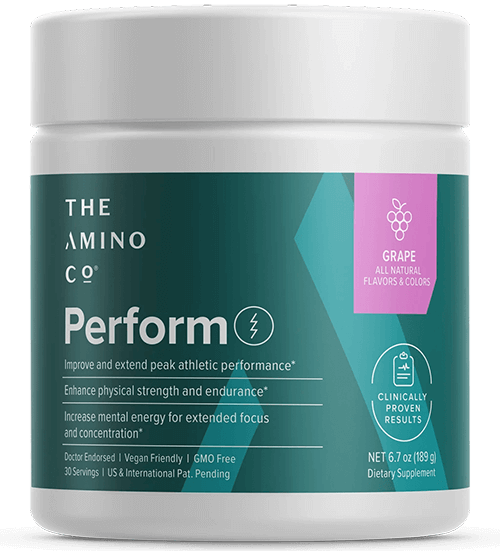How to Safely Use a Foam Roller: Lower Back and Full-Body Stretches to Relieve Pain
 By: by Amino Science
By: by Amino Science

Visit any gym and someone will be on the mat with a foam roller in an attempt to work out all the kinks and pains. What is this device and how exactly does it help the body? Learn what a foam roller is, how it works to relieve tight muscles, and how easy it is to use in the privacy of your own home. Read on to find out how to foam roller lower back pain away, stretch out your upper back, unkink your calf muscles, expand your hip flexors, and more.
What Is a Foam Roller?
If you've never tried foam rolling as part of your stretching and workout routine, you've been missing out on an excellent pain reliever and massage tool.
The foam roller is a cylinder of compressed foam, lightweight, sometimes smooth and sometimes bumpy depending on its intended use. By rolling this foam under your own body weight and strength, you can reduce muscle soreness, increase flexibility, and relieve pain and muscle tightness via self-myofascial release (which involves applying gentle pressure to myofascial connective tissue trigger points to help relieve referred pain in other areas of the body).
Foam rollers can be obtained in different density levels and firmness (higher density for seasoned workout veterans, lower density for those just starting out), as well as different sizes for different areas of the body. A larger foam roller is better for rolling back and chest muscles, while a smaller foam roller is ideal for rolling one's feet to relieve a condition such as foot tendonitis or plantar fasciitis. Textured, bumpy foam rollers provide a deeper penetration to select muscle groups.
Causes of Lower Back Pain That Foam Rolling Exercises Can Help Fix
Back pain can be absolutely debilitating. Your torso is the core of your entire body, and pain afflicting your back and spine can decimate your range of motion and make it impossible for you to stand, sit, walk, or drive without pain.
Conditions such as a slipped or herniated disk should not be treated with a foam roller without the aid of a physical therapist or professional guidance, as there's a chance that using a foam roller inappropriately can cause or exacerbate a slipped disk.
Foam rolling can help alleviate:
- Muscle spasms: If the back muscles seize up, that muscle tension increases the risk of further injury, compromises your range of motion, and frustrates your ability to move and to rest.
- Sciatica: If a bone spur, slipped disk, or injury interferes with the sciatic nerves that run from the lower back down through the left and right legs, the pain can radiate and quickly immobilize you.
- Referred pain: Referred pain is discomfort felt in a location far from the cause of the pain. For example, a pinched nerve in your neck can easily cause a headache, and tight hamstrings can lead to low back pain.
- Misalignment: If your spine is not perfectly straight, if your legs aren't the same length, or if some injury causes you to walk with a limp, the resulting misalignment of the body can lead to pain in the upper body, mid-back, and lower body.

Foam Roller Lower Back Pain Away
It's important to clarify this first: don't foam roller your lower back directly. By this we mean under no circumstances should you apply the foam roller directly to your lumbar spine (which lacks rib cage support) and set the weight of your body there. Foam rolling can absolutely help relieve tight lower back pain via self-massage, but it needs to be applied to the muscles surrounding the back, and not mess with the spine at all.
Most people are very aware of how delicate the spine and lower back are (one mistake moving boxes can cause a life-long injury), so it's important to take care as you use a foam roller for back pain. Check out these proper stretches to see how foam rolling indirectly helps the back without risking injury.
1. Feet, Ankles, and Calves
We're starting from the bottom to help limber up your entire body around the delicate area of the lower back. Your tendons and ligaments are all interconnected, so if your plantar fascia is experiencing pain, it can radiate all the way up and pull your whole body out of balance.
Apply the foam roller to the arch of your foot, roll the back of your heel over it, apply it to the back, inside, and outside of your calves, and the outer portion of your ankle. To enhance the effect on this area, you can bend your left knee and bring it to rest on your right leg (and vice versa for the other leg) to increase the pressure.
We recommend you foam roller calves to reduce sore muscles after a workout, and encourage you to consider using the foam roller first thing in the morning to get your blood flow going and to work out nighttime stiffness for a more relaxed and productive day.
2. Hamstrings, Quads, Hips, and Glutes
Your hamstrings (back of the thighs between the knees and hips), quadriceps (front of the thigh muscles), glutes (buttocks), and hips are even closer to your lower back. Taking tension out of the connective tissue of your thighs helps relieve lower back pain and counteract the damage done by sitting at a desk all day.
To use the foam roller for hip pain, roll the thighs, the sides of your hips (the psoas muscles), and the glutes (including the piriformis, which is a small muscle deep beneath the gluteus maximus) under you own body weight to help improve hip mobility, flexibility, and stability. These muscles are incredibly dense with multiple layers, so loosening them up takes real dedication. We recommend spending time with the foam roller in this area between your desk job (if you have one) and your workout to help undo the sedentary damage from sitting around on your glutes all day.
3. Upper Back, Shoulders, and Arms
Your entire back is not off-limits to foam rolling, only the lower back below the rib cage. Above the ribs has enough stability and support to sustain foam rolling, and can help with both lower and upper back pain, shoulder pain, and neck pain.
The above video demonstrates how you can roll the upper back with a long foam roller and target the deeper muscles of the shoulders with dense foam balls, relieving trigger points in the chest and between the shoulder blades.
Likewise, foam rolling the muscles in the upper and lower arms is a great way to reduce muscle soreness after a workout, as well as treat and prevent wrist tendinitis (also spelled tendonitis) in case your job requires you to sit all day or involves the repetitive motion of typing.

Further Muscle Support
Foam rolling isn't appropriate for everyone. It is not recommended to use a foam roller if you have any bleeding disorders or medical conditions such as organ or heart failure. For those who cannot safely use a foam roller, non-assisted stretches are all the more important, as is making sure you're getting the necessary muscle-support molecules from your food or from supplementation, by which we mean amino acids.
When we're talking about a place as vulnerable as the lower back, strong muscle support is everything, and you can't turn over and synthesis new muscle cells without every one of the nine essential amino acids. For working out, healing and recovering, and building strength, amino acids are key.
To help heal, recover, and build strength, you can lean on Heal, a patented and proven blend of essential amino acids. Learn more here.

Roll On
When foam rolling for lower back pain, it's important to be careful. One mistake could lead to a lifetime of chronic pain, so if at any point your pain gets worse, stop what you're doing and consult a medical or fitness professional for advice and help.
Other than that, you may be surprised by how quickly the foam roller works to cure your ailment, in some cases immediate relief for pain that's been chronic and unshakeable for months, if not years. Use your foam roller well!

Up to 25% off Amino
Shop NowTAGS: injury
Join the Community
Comments (0)
Most Craveable Recipes




 833-264-6620
833-264-6620



















